|
Books Should Be Free Loyal Books Free Public Domain Audiobooks & eBook Downloads |
|
|
Books Should Be Free Loyal Books Free Public Domain Audiobooks & eBook Downloads |
|
War Stories |
|---|
Book type:
Sort by:
View by:
|
By: Leo Tolstoy (1828-1910) | |
|---|---|
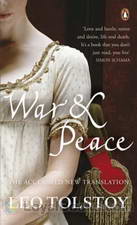 War and Peace
War and Peace
Leo Tolstoy's War and Peace chronicles the lives of five Russian aristocratic families during Napoleon's invasion of Russia. Many considered this book to be the best Russian work of literature of all time and it is massive in scale. The book is divided in four volumes and the chapters don't just contain the narrative of the plot to the novel but philosophical discussions as well. This may be intimidating to average book readers but they shouldn't be discouraged to try reading War and Peace. After all, this book was written for all and not just for intellectuals... | |
 Bethink Yourselves!
Bethink Yourselves!
As Russia goes to war against Japan, Tolstoy urges those at all levels of society, from the Tsar down to the common soldier, to consider their actions in the light of Christ's teaching. "However strange this may appear, the most effective and certain deliverance of men from all the calamities which they inflict upon themselves and from the most dreadful of all—war—is attainable, not by any external general measures, but merely by that simple appeal to the consciousness of each separate man which, nineteen hundred years ago, was proposed by Jesus—that every man bethink himself, and ask himself, who is he, why he lives, and what he should and should not do... | |
By: Mark Twain (1835-1910) | |
|---|---|
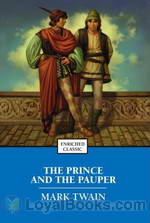 The Prince and the Pauper
The Prince and the Pauper
A poor young boy from the slums of London watches a royal procession pass, with the youthful Prince of Wales riding at its head. He ventures too close and is caught and beaten by the Prince's guards. However, the young royal stops them and invites the vagrant to the palace. Here the two boys sup alone and are stunned to discover that they bear a startling resemblance to each other. The Prince is Edward, long awaited heir of the monarch, Henry VIII, while the vagrant is Tom Canty, the son of a thief and a beggar... | |
 Personal Recollections of Joan of Arc, Volumes 1 & 2
Personal Recollections of Joan of Arc, Volumes 1 & 2
Mark Twain’s work on Joan of Arc is titled in full “Personal Recollections of Joan of Arc, by the Sieur Louis de Conte.” De Conte is identified as Joan’s page and secretary. For those who’ve always wanted to “get behind” the Joan of Arc story and to better understand just what happened, Twain’s narrative makes the story personal and very accessible. The work is fictionally presented as a translation from the manuscript by Jean Francois Alden, or, in the words of the published book, “Freely Translated out of the Ancient French into Modern English from the Original Unpublished Manuscript in the National Archives of France... | |
By: Lucy Maud Montgomery (1874-1942) | |
|---|---|
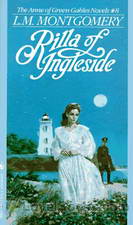 Rilla of Ingleside
Rilla of Ingleside
Rilla of Ingleside is the eighth book in the Anne of Green Gables series and focuses on the inspiring journey of Rilla Blythe, the youngest daughter of Anne and Gilbert, as she transforms from a carefree young girl into an enduring young woman swept into the chaos of war. Written from a female perspective, Montgomery accurately depicts a time in history, as she provides a contemporaneous account of the war and serves up the most emotional book in the series. Set during the First World War, the novel explores themes of coming of age, love, separation, and most importantly women’s roles during the war... | |
 Rainbow Valley
Rainbow Valley
If you've read and loved Anne of Green Gables, you'd definitely like to add Rainbow Valley by Lucy Maud Montgomery to your collection. Published in 1919, it is the seventh book in the series and follows the further life and adventures of Anne Shirley. At Ingleside, Anne is now happily married to her childhood friend the devoted Gilbert Blythe and have now been together blissfully for fifteen years. They have six children. The book opens with the return of Anne and Gilbert (who is now a brilliant doctor) from a sojourn in London, where they had gone to attend a big medical congress... | |
By: Jules Verne (1828-1905) | |
|---|---|
 The Blockade Runners
The Blockade Runners
Writing at the end of the American Civil War, Verne weaves this story of a Scottish merchant who, in desperation at the interruption of the flow of Southern cotton due to the Union blockade, determines to build his own fast ship and run guns to the Confederates in exchange for the cotton piling up unsold on their wharves. His simple plan becomes complicated by two passengers who board his new ship under false pretenses in order to carry out a rescue mission, one which Capt. Playfair adopts as his own cause. This is going make the Rebels in Charleston rather unhappy with him.Sure, his new ship is fast - but can it escape the cannonballs of both North and South? | |
By: Frances Hodgson Burnett (1849-1924) | |
|---|---|
 Robin
Robin
Starting with a summary of the 1922 novel The Head of the House of Coombe, which followed the relationships between a group of pre-WWI English nobles and commoners, this sequel, called Robin, completes the story of Robin, Lord Coombe, Donal and Feather. (Introduction by Linda Andrus) | |
By: Charlotte Brontë (1816-1855) | |
|---|---|
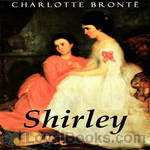 Shirley
Shirley
Shirley is an 1849 social novel by the English novelist Charlotte Brontë. It was Brontë's second published novel after Jane Eyre (originally published under Brontë's pseudonym Currer Bell). The novel is set in Yorkshire in the period 1811–1812, during the industrial depression resulting from the Napoleonic Wars and the War of 1812. The novel is set against a backdrop of the Luddite uprisings in the Yorkshire textile industry. | |
By: Edward Gibbon (1737-1794) | |
|---|---|
 Memoirs of My Life and Writings
Memoirs of My Life and Writings
| |
By: Robert Louis Stevenson | |
|---|---|
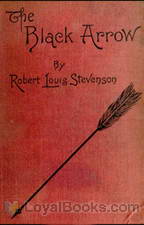 The Black Arrow; a Tale of Two Roses
The Black Arrow; a Tale of Two Roses
The Black Arrow tells the story of Richard (Dick) Shelton during the Wars of the Roses: how he becomes a knight, rescues his lady Joanna Sedley, and obtains justice for the murder of his father, Sir Harry Shelton. Outlaws in Tunstall Forest organized by Ellis Duckworth, whose weapon and calling card is a black arrow, cause Dick to suspect that his guardian Sir Daniel Brackley and his retainers are responsible for his father’s murder. Dick’s suspicions are enough to turn Sir Daniel against him, so he has no recourse but to escape from Sir Daniel and join the outlaws of the Black Arrow against him... | |
By: L. Frank Baum (1856-1919) | |
|---|---|
 Mary Louise and the Liberty Girls
Mary Louise and the Liberty Girls
The Bluebird Books is a series of novels popular with teenage girls in the 1910s and 1920s. The series was begun by L. Frank Baum using his Edith Van Dyne pseudonym, then continued by at least three others, all using the same pseudonym. Baum wrote the first four books in the series, possibly with help from his son, Harry Neal Baum, on the third. The books are concerned with adolescent girl detectives— a concept Baum had experimented with earlier, in The Daring Twins (1911) and Phoebe Daring (1912)... | |
By: Thomas Hardy (1840-1928) | |
|---|---|
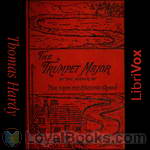 The Trumpet-Major
The Trumpet-Major
Our heroine, Anne Garland, lives quietly in a rural community deep in the English countryside. However, the arrival of several regiments preparing for an expected invasion brings colour and chaos to the county. A graceful and charming young woman, Anne is pursued by three suitors: John Loveday, the trumpet-major in a British regiment, honest and loyal; his brother Robert, a merchant seaman and womaniser, and Festus Derriman, the cowardly son of the local squire. Set at the time of the Napoleonic wars, this is the author’s only historical novel, and unusually for Hardy’s stories, most of the characters live happily ever after. | |
By: H. G. Wells (1866-1946) | |
|---|---|
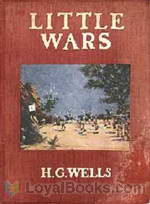 Little Wars (A Game for Boys)
Little Wars (A Game for Boys)
Miniature wargaming got its start with the publication in 1913 of this thoroughly entertaining little account of how H.G. Wells, with certain of his friends, took their childhood toys and turned play into acceptable middle-aged sport by subjecting the exercise to the civilizing influence of actual rules. While wargaming progressed far past these beginnings, Wells observes how “little wars” with even his elementary rules can suggest the wholesale crudity of the real thing. “You have only to play at Little Wars three or four times to realise just what a blundering thing Great War must be... | |
By: Rudyard Kipling | |
|---|---|
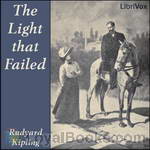 The Light that Failed
The Light that Failed
This novel, first published in 1890, follows the life of Dick Heldar, a painter. Most of the novel is set in London, but many important events throughout the story occur in Sudan or India. It was made into a 1916 film with Jose Collins and a 1939 film by Paramount starring Ronald Colman. | |
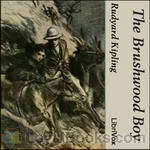 The Brushwood Boy
The Brushwood Boy
The experiences in public school, Sandhurst and military life in India of Major George Cottar together with his adventures in the dream world he discovers and frequents. | |
 Sea Warfare
Sea Warfare
| |
 France At War: On the Frontier of Civilization
France At War: On the Frontier of Civilization
In 1915, as the "Great War" (World War 1) entered its second year Rudyard Kipling made a journalistic tour of the front, visiting French armed forces. By then he was already winner of the Nobel Prize for Literature (the first writer in English to be so honoured). He published his observations in articles in the Daily Telegraph in England, and in the New York Sun. At that stage of the war nationalistic sentiments were running high but the true cost of war was beginning to be understood "at home"... | |
 The Eyes of Asia
The Eyes of Asia
| |
By: Alexandre Dumas (1802-1870) | |
|---|---|
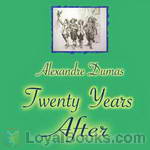 Twenty Years After
Twenty Years After
First serialized from January to August, 1845, Twenty Years After is the second book in The D’Artagnan Romances, and follows the gallant adventures of the musketeers, as they are once again summoned to alleviate the various threats that lurk in the political scene of France, as the country is threatened by a possible uprising. Enriched with exciting and well-developed characters, the novel adds more detail to its familiar characters, as the musketeers have matured and are portrayed in a more introspective light... | |
 Ten Years Later
Ten Years Later
After The Three Muskateers and Twenty Years After the adventurous story of Athos, Porthos, Aramis and D'Artagnan continues!The Vicomte of Bragelonne: Ten Years Later (French: Le Vicomte de Bragelonne ou Dix ans plus tard) is the last of the Musketeer novels. It is usually divided into four volumes and this second volume contains chapters 76-140. | |
 The Prussian Terror
The Prussian Terror
| |
By: Daniel Defoe (1661?-1731) | |
|---|---|
 Memoirs of a Cavalier A Military Journal of the Wars in Germany, and the Wars in England. From the Year 1632 to the Year 1648.
Memoirs of a Cavalier A Military Journal of the Wars in Germany, and the Wars in England. From the Year 1632 to the Year 1648.
| |
By: Herman Melville | |
|---|---|
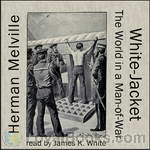 White Jacket, or The World in a Man-of-War
White Jacket, or The World in a Man-of-War
This is a tale based on Melville's experiences aboard the USS United States from 1843 to 1844. It comments on the harsh and brutal realities of service in the US Navy at that time, but beyond this the narrator has created for the reader graphic symbols for class distinction, segregation and slavery aboard this microcosm of the world, the USS Neversink. (Introduction by James K. White) | |
By: Alan Edward Nourse (1928-1992) | |
|---|---|
 Bear Trap
Bear Trap
| |
By: P. G. Wodehouse (1881-1975) | |
|---|---|
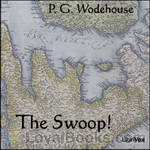 The Swoop!
The Swoop!
The Swoop! tells of the simultaneous invasion of England by several armies — “England was not merely beneath the heel of the invader. It was beneath the heels of nine invaders. There was barely standing-room.” (ch. 1) — and features references to many well-known figures of the day, among them the politician Herbert Gladstone, novelist Edgar Wallace, actor-managers Seymour Hicks and George Edwardes, and boxer Bob Fitzsimmons. | |
By: Edith Wharton (1862-1937) | |
|---|---|
 Fighting France, from Dunkerque to Belfort
Fighting France, from Dunkerque to Belfort
American novelist Edith Wharton was living in Paris when World War I broke out in 1914. She obtained permission to visit sites behind the lines, including hospitals, ravaged villages, and trenches. Fighting France records her travels along the front in 1914 and 1915, and celebrates the indomitable spirit of the French people. | |
 Coming Home 1916
Coming Home 1916
| |
By: Jacob Abbott (1803-1879) | |
|---|---|
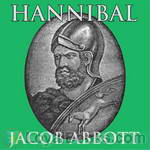 Hannibal
Hannibal
There are certain names which are familiar, as names, to all mankind; and every person who seeks for any degree of mental cultivation, feels desirous of informing himself of the leading outlines of their history, that he may know, in brief, what it was in their characters or their doings which has given them so widely-extended a fame. Consequently, great historical names alone are selected; and it has been the writer's aim to present the prominent and leading traits in their characters, and all the important events in their lives, in a bold and free manner, and yet in the plain and simple language which is so obviously required in works which aim at permanent and practical usefulness... | |
By: Anthony Trollope (1815-1882) | |
|---|---|
 An Old Man's Love
An Old Man's Love
This was Trollope's last completed novel, and he may have acquired his sympathy for older lovers with age! A not-so-very-old man, Mr. Whittlestaff, dearly loves Mary Lawrie, the girl he provides a home for after her father's death. He wishes to marry her, and she reluctantly accepts him, but warns him of her deep regard for a young man she had known years earlier. That Mr. Gordon had not exactly engaged her, but had gone off to seek his fortune and had not communicated with Mary ever since. Shortly after Mary accepts Mr. Whittlestaff, Gordon shows up. Trollope works out a final arrangement which resolves the quandary, but not with comfort. (Arnold Banner) | |
 La Vendée
La Vendée
| |
By: Walt Whitman (1819-1892) | |
|---|---|
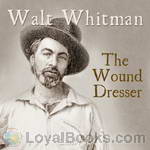 The Wound Dresser
The Wound Dresser
The Wound Dresser is a series of letters written from the hospitals in Washington by Walt Whitman during the War of the Rebellion to The New York Times, the Brooklyn Eagle and his mother, edited by Richard Maurice Burke, M.D., one of Whitman's literary executors. | |